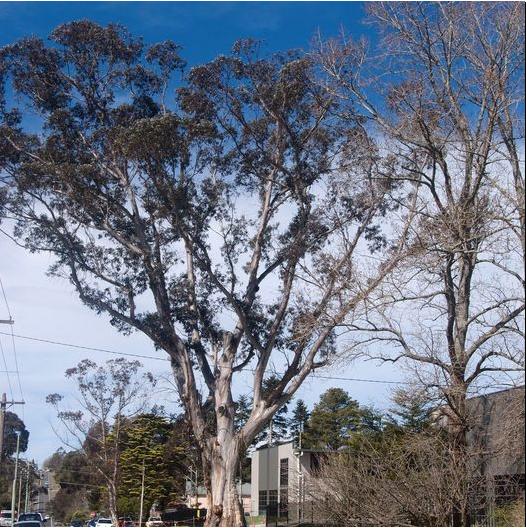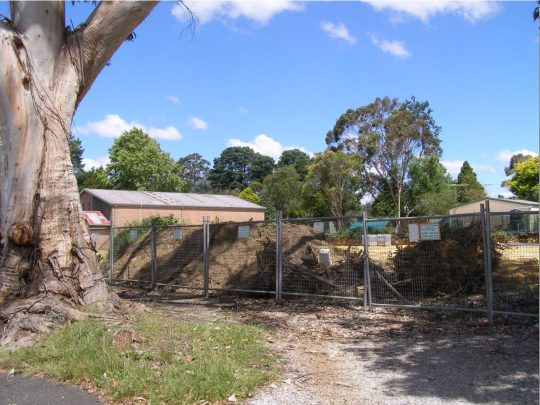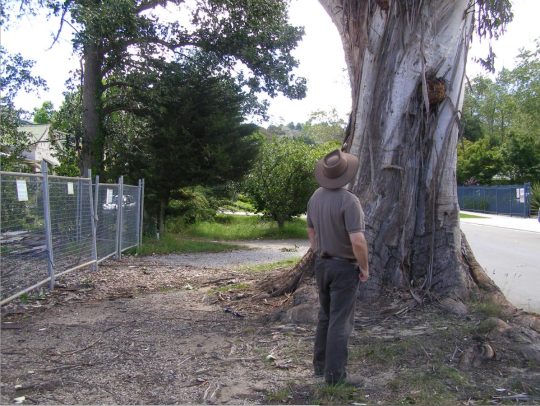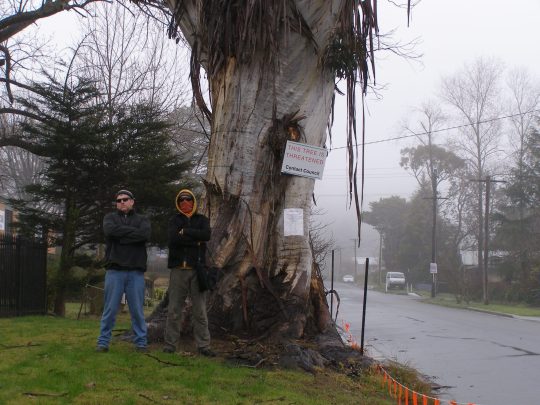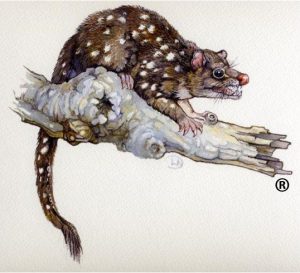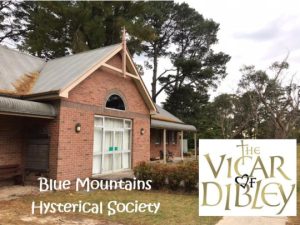SAVE ATLAS Campaign – Part 1
Friday, June 2nd, 2023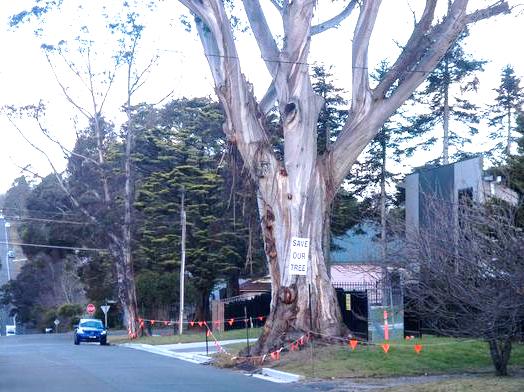
‘ATLAS’? This is the worthy name our campaign branded this magnificent and extremely rare 250+ year-old Eucalyptus oreades that came under greedy developer threat. It is an endemic native tree estimated to predate Katoomba and indeed pre-date Captain Cook (that is pre-1770!)
About ‘Friends of ATLAS’
Back in 2014 at the start of spring in the Blue Mountains (Australia), Katoomba residents Maureen and Peter Toy from their home at 57 Megalong Street observed a man inspecting this magnificent tree on the verge out front. They approached the man, who then told them that he reckoned the tree was “diseased” and so had to be “removed” (aka killed).
The Toy’s campaign to save this magnificent tree was on in earnest!
ATLAS survives in good health, not diseased, as a 250 year old (in 2014) native Blue Mountains Ash (Eucalyptus oreades), with a still-growing canopy of 40+ metres high.
ATLAS pre-dates the settlement of Katoomba. Indeed, ATLAS predates colonial settlement of Australian in 1788. According to a learned Grade 5 arborist with long experience in these species, ATLAS probably started growing as a sapling from the 1760s – before the French Revolution, before the American War of Independence, before James Cook first set sail from Britain to explore the Pacific and find the rumoured great southern continent in 1768.
This tree is an icon like the Three Sisters, yet hidden in Blue Mountains {city} Council’s assigned industrial area of Katoomba near the headwaters of Leura Creek and upstream of the popular tourist attraction of Leura Cascades and Leura Falls which tumbles into the Jamison Valley within the Greater Blue Mountains World Heritage Area.
According to advice the Toys received from local conservation consultancy The Habitat Advocate, this large Blue Mountains Ash (Eucalyptus oreades) is a native tree only found in the Upper Blue Mountains. Thousands of oreades were incinerated by the 2003 Centennial Glen bushfire, making the species now threatened in the upper Blue Mountains.
Maureen says:
“It is a beautiful and rare specimen and Blue Mountains folk are fortunate that we have such a significant tree still growing right by Megalong Street in industrial Katoomba. Over the many decades, this tree has withstood fierce windstorms, bushfires, (dodgy) road-widening and even industrial development all around it.”
With a canopy about 40 metres high and a trunk girth of over 5 metres (measured at 1.4m above the ground ^SOURCE), the tree has become a recognised icon and reference point in the area. It is home to a large flock of Sulphur-Crested Cockatoos that roosts in the tree daily.
Campaign Background
Some years prior in 2012, The Habitat Advocate’s Conservation Consultant Steven, had had his own concerns about the new development taking place behind the tree at 59 Megalong Street Katoomba, and decided to take some before-shot photos; the following three taken on 11th January 2012.
So two years hence, with the new ‘mega industrial park’ constructed adjacent to the tree, the consulting arborist David Ford, whom Maureen and Peter had talked to, became the arch enemy to the preservation of the tree.
Peter couldn’t understand why the tree was NOT already listed on Council’s Blue Mountains Significant Tree Register or why anyone would want to harm it. The tree is situated on a community verge (Council-community land) and for the prior few years there had been an industrial development constructed behind it.
Peter and Maureen were vehemently opposed to any further harm being inflicted upon the tree and they have lodged a protest with council. Several others in the local community sided with the Toys and together formed an informal local community activist group ‘Friends of ATLAS’ – determined to save and protect this magnificent native tree. Their daughter Angelique started up an online petition to garner local community recognition and support to protect the tree.
Peter reckoned at the time:
“It’s early days but he is ready for a sustained fight.”
A fellow local supported commented:
“Dear Friends,
There is an emergency right now, to save one of the oldest Blue Mountain Ash trees that we have left.. The tree is now known as ‘Atlas’. You may well know this magnificent tree located at 59 Megalong Street, Katoomba. It has a girth of 5 metres and a growing canopy of 40 metres high. The tree has been estimated to be between 200 and 300 years old, I love this tree and hope you will help us save it 🙂
THANKS FOR YOUR SUPPORT
Peter H. Marshall”
A spokesperson from Blue Mountains {city} Council confirmed that the tree is situated on council verge land and not on the industrial development site behind. Research into the planning approval for the industrial development behind revealed that Council had stipulated in its development consent conditions that the tree must not be harmed by the development activity.
Though Peter disagrees. He says “guttering has been dug right into the tree roots system, then just a month ago the developer (behind) had a bobcat grade the topsoil and roots around the tree for an entire day!.”
Council’s spokesperson at the time clarified that council had not received any request for the tree to be destroyed. The community battle to save this tree from Council neglect and indifference was set to ensue.
Save ATLAS Campaign
The Habitat Advocate took a particular interest in saving this tree shortly after noticing the sign on it ‘SAVE OUR TREE‘, placed there by Peter and Maureen in September 2014.
Our Conservation Consultant, Steven, had first observed the sign on the tree whilst a driver for Blue Mountains Bus Company as he sat in a bus in the depot one morning doing his bus pre-checks.
After his shift, Steven took a chance that the sign’s maker lived nearby and so knocked on the door of the house adjacent at 57. Peter and Maureen opened the door and the contact was established. [Editor’s Note: Peter and Maureen have long since relocated back to their home town in Western Australia].
Steven suggested the tree deserved a name, as a brand for a public campaign to save it from being killed. Maureen affectionately called it the ‘Atlas’, after the Greek God, appropriately for its towering size and for be so enduring. In Greek mythology, Atlas was one of the most famous Titans, the son of Iapetus and the Oceanid Asia (or, possibly, Clymene). He was the leader of the Titan rebellion against Zeus, and he got a fitting punishment after the end of the Titanomachy: he was condemned to eternally hold up the sky. The etymology of the name ‘Atlas’ is from the ancient Greek word τλῆναι “to endure”.
This is a Roman statue of Atlas at the National Archaeological Museum of Naples in Italy. It is believed to be the oldest, dating from 2nd century AD.
Steven suggested a change of sign to generate more passerby interest, given that adjoining Megalong Street is a busy thoroughfare between the industrial precinct of Katoomba and Leura.
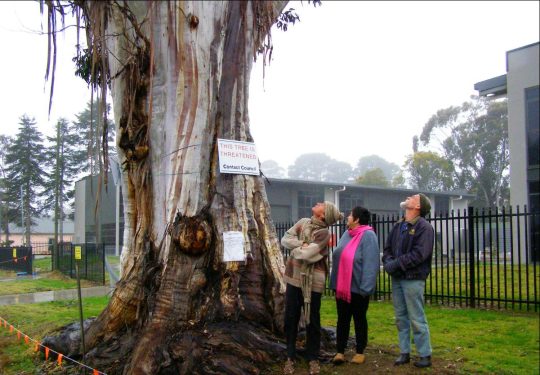
This new sign proved very effective. It reads: “THIS TREE IS THREATENED, Contact Council“. Many concerned locals indeed did contact Blue Mountains {city} Council to protest and demand what was going on. [Photo by Editor: Katoomba locals Maureen and Peter Toy, with Glenn Humphreys on the right, spring 2014]
“Threatened” was a play on words, since it had three meanings, intentionally.
Firstly, this flora species, a ‘Eucalyptus oreades’, is locally endemic to this small area of the Central Upper Blue Mountains, that is it is wildly found nowhere else on the planet and the species natural habitat and number of trees have been decimated by human deforestation since British colonisation of the area from the 1870s such that the remnant number of trees can almost be counted. This species and its ecological community is likely botanically deemed “threatened”, that is, it is likely to become extinct in the foreseeable future.
Secondly, this extremely large and mature, yet healthy specimen, could be more than 250 years old and so an even rarer example of the species. The number of such specimens growing in what once was their wild habitat may well be currently counted on one’s hands.
Thirdly, more imminent a threat is that the industrial developer who owns the site immediately behind this tree has intention of having it killed the tree in order to make way for some greedy notion of providing an overflow of customer parking on the verge outside his site.
Peter Toy quickly set up a dedicated Facebook Page (now defunct) in September 2014, calling it ‘Friends of ATLAS’. Maureen and Peter’s daughter Angelique established an online petition on the Change.org website.
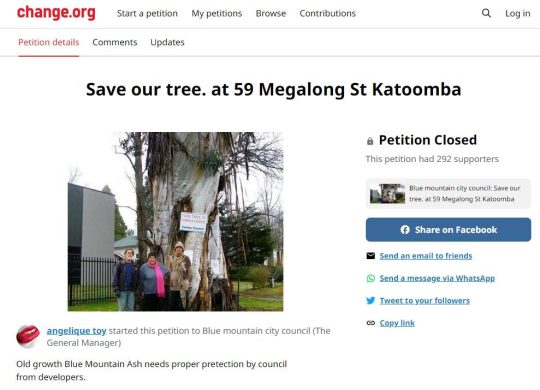
Garnering a community support base of nearly 300 individuals on a petition to save one important tree was one campaign success outcome
Fact Finding
As the publicity campaign to save the tree got under way, The Habitat Advocate considered some fact finding needed be done about the compliance of this development with Council’s conditions of consent, and in order to clarify the justification posed by the consulting arborist for killing this magnificent and otherwise healthy native tree.
Suspicions were that the arborist had assessed the tree on behalf of his client the property developer and had concluded what the developer wanted – the tree’s removal to make way for concrete paving of the Council verge to facilitate increased vehicle parking for the new industrial site.
Enquiries to Blue Mountains {city} Council confirmed that the development at 59 Megalong Street Katoomba was recorded by Council as ‘Industrial Development DA X/435/2010‘. A number of publicly available documents were obtained by The Habitat Advocate in relation to this development threat.
[Editor’s Note:
This habitat story is to be continued sometime in spring 2023, due to other pressing commitments that we currently have. The story shall be told in a number of parts discussing the SAVE ATLAS Campaign, its goals, strategy, opponents, supporters, relevant framework (planning and legal), research, publicity and ongoing updates. Unlike other attempts by Blue Mountains conservationists to save valued trees, especially endemic natives like this one, this conservation campaign succeeded and the campaign story shall provide not just a wonderful Blue Mountains story about a community coming together to protect natural heritage but also shall be instructive to others facing similar challenges of how to win against often overwhelming odds. Future parts to this story shall be posted in turn as a lead article on the front page of this website, The Habitat Advocate, which continues to be based in The Gully Catchment in the town of Katoomba since 2001. We thank our readers for their interest, support and patience].
Further Reading:
[1] “Circumference is measured at 1.4 metres above ground level. If the tree forks, record the smallest circumference between 1.4m and the ground below the lowest fork“, National Register of Big Trees, ^https://www.nationalregisterofbigtrees.com.au/pages/tree-measurement
[2] ‘A Blue Mountains iconic tree at risk‘, 2012-10-10, ^https://habitatadvocate.com.au/a-blue-mountains-iconic-tree-at-risk/
[3]
[4]
